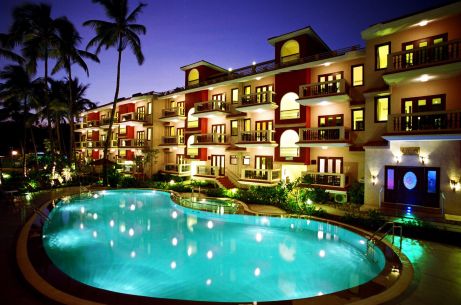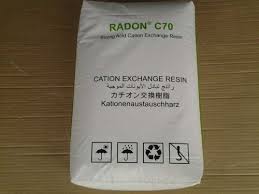FOOD FOR THOUGHT:
Can you afford to consume or use contaminated water? If your answer is ‘NO’, then go on to read this article! It is just for you.
Water is a “universal solvent” for its ability to dissolve many substances. It is one natural resource each of us use in abundance in our lives. The biggest challenge nowadays is the consumption or usage of clean water.
Well, we all are well versed with the ill-effects of unfit water or contaminated water. It leads to a number of water borne diseases such as cholera, malaria, typhoid etc. Water pollution is an after effect of contaminated water.
CHLORINE, as a halogen is a highly efficient disinfectant, and is added to public water supplies to kill disease-causing pathogens, such as bacteria, viruses, and protozoans, that commonly grow in water supply reservoirs, on the walls of water mains and in storage tanks. In easy terms, it acts as a savior against the contaminated water.
.
Types of Chlorine:
- Sodium Hypochlorite
Sodium Hypochlorite is a liquid Chlorine and has around 10-12% available Chlorine. Available Chlorine (AC) is the amount of Chlorine released in the water to disinfect. Bleach, which contains Sodium Hypo, only has 5% AC which is why bleach is not a good pool disinfectant. Because of its liquid nature Sodium Hypo is usually applied to a pool through an automatic chemical feeder. Big water parks and large commercial pools are the common users of Sodium Hypochlorite.
Side note: Salt pools are still Chlorine pool because the salt cell breaks the salt down into Sodium Hypochlorite.
- Bleaching Powder
Bleaching Powder is commonly seen as powder Chlorine. Bleaching Powder has an AC of 30-35%. Bleaching Powder is used not only to shock a pool but is used in erosion feeders as the a way to disinfect a pool.
The difference between Bleaching Powder and NaDCC is the chlorine content
Remember: the higher the AC level the more disinfectant is going into your pool. The cost may be lower but so is the amount of chemical you’re getting.
- NaDCC and TCCA
Both are stabilized Chlorines making them perfect for outdoor pools and are usually seen as tablets and granular. Their AC level is usually around 60-90% and introduced to the water thru chemical feeders or skimmers. Because of their high AC level, they are used to treat pool problems due to algae or a Chlorine demand.
What is a chlorine tablet?
Chlorination to make water potable dates back to the turn of the 20th century. Soon afterward, chlorine also began being used for general disinfection and for making swimming pools safe. As home swimming pools became popular, the need developed for a quick, easy way for the average person to add chlorine to water quickly, easily, and without the hazard of coming in direct contact with dangerous chemicals. Chlorine tablets become a popular way of achieving that goal. Their use eventually extended to use in drinking water treatment plants.
Chlorine tablets are solid pellets of a chemical compound containing chlorine that are used to disinfect and purify drinking water and water used in swimming pools.
In swimming pools, chlorine tablets are used not only to kill bacteria in the water but also to prevent the growth of algae and to maintain the proper pH level. The pH level is a rating on a scale that indicates how acidic or caustic a substance is. A safe pH level for a swimming pool is between 7.2 and 7.6.
Manufacturers of most hot tubs, spas and whirlpools recommend using chlorine tablets or other chlorine-based products to sanitize the water. The frequency of such treatments may vary from manufacturer to manufacturer. The owner’s manual generally provides directions for proper chemical treatments.

How do different kinds of Chlorine Tablets Work
- Working of normal chlorine tablets (based on Bleaching Powder): As the chlorine tablets dissolve in water, a chemical reaction occurs. The water becomes a light acid; this light acid interacts with algae and bacteria and sanitizes the pool surface and water. The calcium residue that is left over freely floats throughout the pool.
- Working of Acuro’s Chlorine Tablet (based on NaDCC): As the chlorine tablets dissolve in water, a chemical reaction occurs. The water becomes a light acid; this light acid interacts with algae and bacteria and sanitizes the pool surface and water. There is no calcium residue left as Acuro chlorine tablets are 100% soluble.

ADVANTAGES of ACURO’s NaDCC based POWERCHLOR Chlorine tablets:
- Stable for more than 2 years
- Accurate: always yielding the stated level of available chlorine.
- Convenient and easy to use. Just add to water and allow to dissolve. The speed of dissolution can be enhanced by the use of warm water and/or by stirring.
- Economical in use: the tablets provide an easy to use dilution system that eradicates the over-dosing that is common with liquid bleach and more importantly minimizes any under-dosing potential.
- Easy to store and distribute – no spillages, no leaks.
- Much safer to use than liquid bleach – reduced risk of accident and personal injury.
- Less corrosive than liquid bleach. Tests have shown that nearly all metals in common use are more readily corroded by liquid bleach than by POWERCHLOR Na tablets.
- Possess greater biocidal properties, strength for strength, than liquid bleach, especially in the presence of soiling.
APPLICATIONS of ACURO’s POWERCHLOR Chlorine Tablets:
- PUBLIC UTILITY:
- Disinfecting water for drinking
- bathing, cooking, etc.
- Sanitation of water during natural calamity period
- Water Sanitation for public utility

- POULTRY:
- Disinfection and sanitation of feed water
- Spraying over cages, sheds
- Transport vehicles
- Hatching trays
- Equipments, floor, etc

- CATTLE SHED, GOAT FARM, STABLE, PIG HOUSES, CAMEL SHED ETC:
- Feed water sanitation
- Rinsing the shed after cleaning
- Cleaning the foot and mouth

- DAIRY:
- Cow Sheds floor, walls and drains
- Animal’s drinking water
- Milk handling equipment, tanks and pipelines

- HOSPITALS:
- Mopping
- Rinsing bed linen
- Rinsing surgical equipment
- Human spills
- Infants nappy, feeding bottle, etc

- HOTELS:
- Floor and bed linen
- Drinking water and water for utilities
- Pre-Chlorination of R.O feed water (can allow passing through the membrane if the residual chlorine level is brought below 0.20 ppm)
- Cleaning utensils, cutlery and crockery
- Swimming pool

- AQUACULTURE:
- Cleaning Shrimps
- Equipments
- Nets
- Feed trays

FOR REQUIREMENTS / QUERIES
CONTACT US:
ACURO ORGANICS LIMITED
sales@acuro.in | Ph:+91-120 – 4888444 (100 lines)





 ⦁ WATER TREATMENT: It is suitable for all kinds of water treatment such as deionization, demineralisation, condensate polishing and preparation of pure water and ultra-pure water.
⦁ WATER TREATMENT: It is suitable for all kinds of water treatment such as deionization, demineralisation, condensate polishing and preparation of pure water and ultra-pure water. ⦁ OTHER USES: The resin can be used in the treatment of foodstuffs, beverages, potable waters and water used in the processing of food. It is also suitable for pharmaceutical industry.
⦁ OTHER USES: The resin can be used in the treatment of foodstuffs, beverages, potable waters and water used in the processing of food. It is also suitable for pharmaceutical industry.
